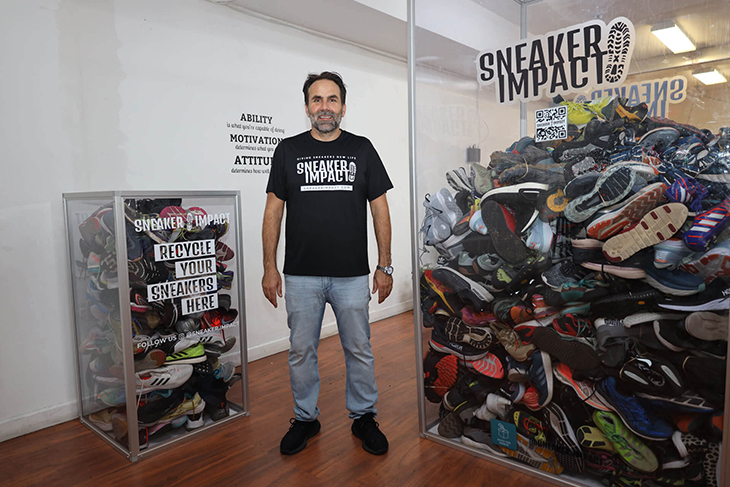

A Miami Initiative with Global Reach
In the heart of Miami’s Little Haiti neighborhood, an unassuming warehouse is quietly challenging one of America’s most overlooked waste problems: the mountains of discarded sneakers piling up in landfills. Inside this facility, Sneaker Impact—a local business driven by sustainability and social enterprise—sorts through thousands of donated shoes every week, giving each pair a chance at a second life.
Whether the sneakers arrive barely worn or with soles that have seen countless miles, Sneaker Impact’s mission is clear: keep them out of the dump and get them back into use, one way or another. This commitment is more urgent than ever, given that the average American is estimated to own 250 pairs of shoes over a lifetime, many of which ultimately end up as non-biodegradable waste.
The Man Behind the Mission
Sneaker Impact is the brainchild of Moe Hachem, a businessman who decided that profit and environmental responsibility shouldn’t be mutually exclusive. “It’s all about accountability, sending the right product to the right market,” Hachem told CBS News in an interview that captured the essence of his vision.
For Hachem, sneakers are more than just footwear; they are a lifeline in many developing countries where access to durable shoes can make the difference between attending school safely or suffering from preventable diseases. “Sneakers are a necessity in the developing world. They are a form of transportation,” he emphasized, highlighting the real-world impact of a product many Americans take for granted.
How It Works: From Donation to Distribution
Sneaker Impact operates on a model that is as efficient as it is socially beneficial. Each year, the company processes about one million pairs of shoes, thanks to an extensive network of volunteer partners such as running clubs and community organizations. Because these donations eliminate the need to purchase raw materials, the primary cost for Sneaker Impact is the labor involved in collecting, cleaning, and sorting the shoes.
Once the sneakers arrive at the Little Haiti facility, they are meticulously categorized based on condition, brand, and demand in target markets. Shoes that are still wearable are bundled in batches of about 200 pairs and shipped to various parts of the world, including regions in Africa, Latin America, and Southeast Asia. These shipments not only reduce waste domestically but also empower local entrepreneurs abroad. “You’re not only reducing waste here at home, you are creating microbusiness opportunities in a developing country,” Hachem explained.
Giving New Life to the Unusable
Not every pair can be saved for resale. Those beyond repair face a different but equally purposeful fate. Shoes that are too damaged are shredded into their component materials—foam, fabric, and rubber. These reclaimed materials are then sold to manufacturers that transform them into products like carpet padding, playground surfaces, and floor mats.
In a creative twist on upcycling, Sneaker Impact has even launched its own product: a gym sandal made of 85% recycled sneaker foam. Despite its lightweight feel, this foam is incredibly durable and weather-resistant, having originally been engineered to endure hours of pounding pavement.
More than Recycling: An Ecosystem of Change
Sneaker Impact’s efforts are part of a broader movement that redefines waste as a resource and highlights how circular economies can benefit communities both at home and abroad. The model bears similarities to other sustainable initiatives such as Chicago’s Working Bikes, which has refurbished over 150,000 bicycles in 26 years—keeping them out of landfills while promoting affordable transportation globally.
By combining environmental stewardship with social entrepreneurship, Sneaker Impact is not just keeping sneakers out of landfills; it is building an ecosystem that connects donors, communities, and small businesses worldwide.
A Call to Accountability
As consumers become more conscious of the life cycle of the products they buy, Sneaker Impact offers a compelling blueprint for how everyday items—like an old pair of running shoes—can have value far beyond their first owner.
For Moe Hachem and his team, the goal is simple but powerful: keep sneakers out of landfills, give them a chance to keep moving, and, in doing so, help people move forward too. “It’s about making sure nothing goes to waste and that someone, somewhere, benefits from what we no longer need,” Hachem says—a sentiment that turns each donated pair into a small but significant step toward a more sustainable and equitable world.
What are your thoughts? Please comment below and share this news!
True Activist / Report a typo







